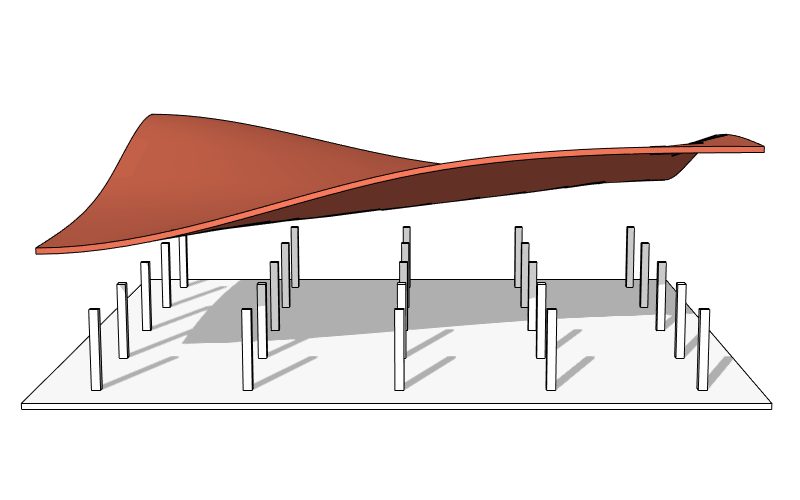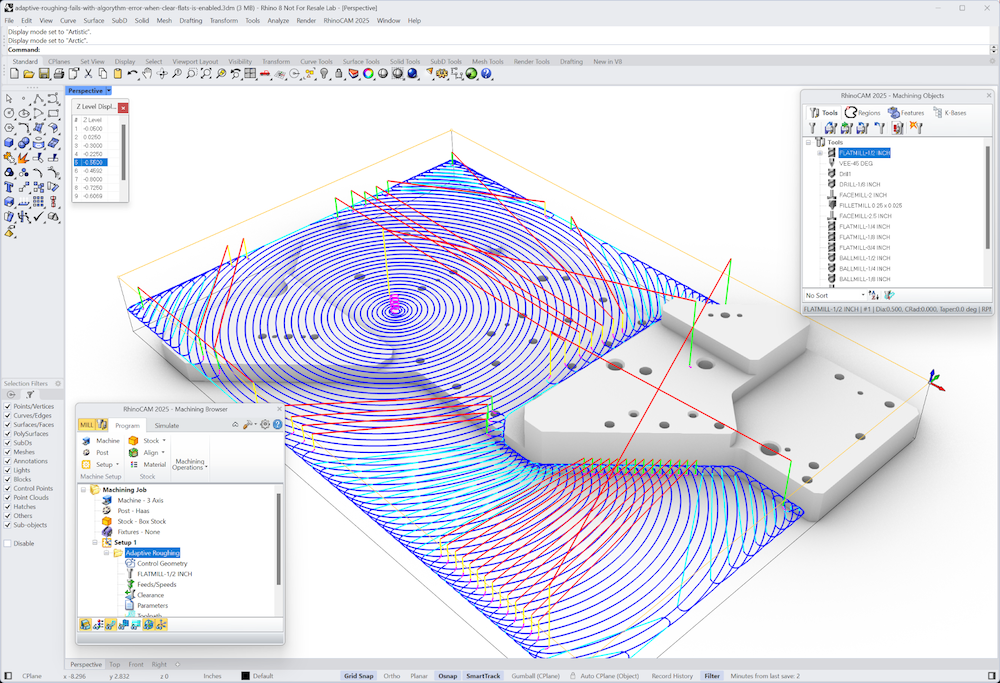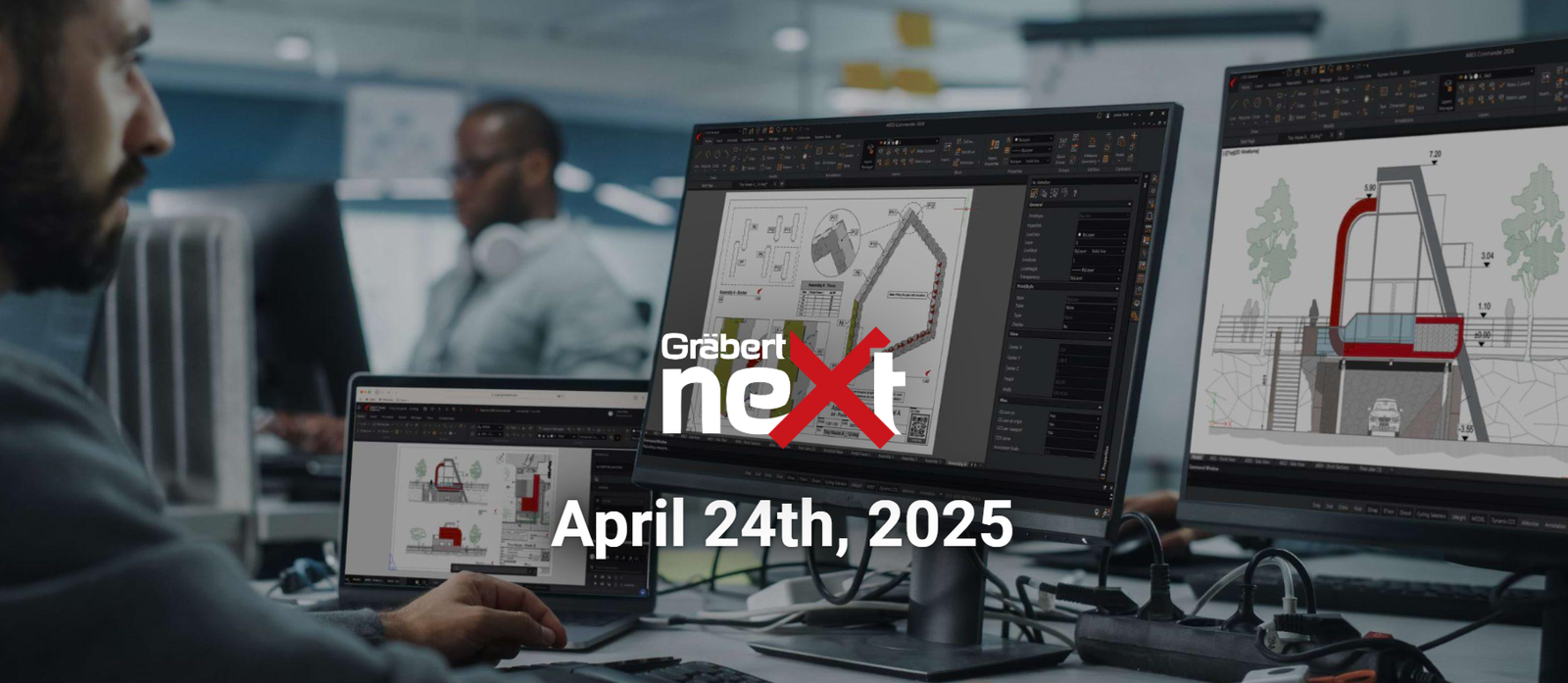Your Cart is Empty
Customer Testimonials
-
"Great customer service. The folks at Novedge were super helpful in navigating a somewhat complicated order including software upgrades and serial numbers in various stages of inactivity. They were friendly and helpful throughout the process.."
Ruben Ruckmark
"Quick & very helpful. We have been using Novedge for years and are very happy with their quick service when we need to make a purchase and excellent support resolving any issues."
Will Woodson
"Scott is the best. He reminds me about subscriptions dates, guides me in the correct direction for updates. He always responds promptly to me. He is literally the reason I continue to work with Novedge and will do so in the future."
Edward Mchugh
"Calvin Lok is “the man”. After my purchase of Sketchup 2021, he called me and provided step-by-step instructions to ease me through difficulties I was having with the setup of my new software."
Mike Borzage
An Interview with Evan Yares, Charismatic CAD Expert
June 11, 2008 7 min read

Evan C. Yares is a well-known figure in the CAD world. He has the drive and vision to put himself in the right spot in order to maximize his influence on the CAD community and its products. He has opinions and is not afraid to share them, even when this means taking the risk of making a few enemies in some powerful corporations. His popular blog openly discusses critical topics, and his long advocacy for greater CAD interoperability was publicly recognized by the CAD Society that awarded Evan with the prestigious 2008 Joe Greco Community Award. After exchanging opinions with Evan about several CAD topics, I asked him for an interview. He accepted but took his time getting back to me with his answers. After reading Evan's responses I believe it was well worth the wait. Please feel free to judge for yourself; the interview follows below.
Evan, can you tell us a bit about yourself and your professional activities?
I’m an engineer who grew up in a family of artists. That might help add some perspective for people who can’t quite figure me out.
I’m an engineer who grew up in a family of artists
I started my working life as a construction worker and house painter, which was great motivation for me to get into college, and get my engineering degree. After graduating, I worked as a field engineer, then a design engineer. In 1982, I discovered AutoCAD (at its first official showing), and shortly thereafter, my career became CAD. Through the years, I’ve worked as a reseller, a consultant, a writer, and more. I was a co-founder of Cyon Research (co-creating COFES: the Congress on the Future of Engineering Software, with my partners Brad Holtz and Joel Orr), and for eight years was the president/executive director of the Open Design Alliance.
These days, I work as an independent analyst and consultant, continuing to focus on the engineering software industry, with a user-centric viewpoint.
You have earned a great reputation as a promoter of CAD users’ rights. Was this just part of your job at ODA (Open Design Alliance) or is this something you are passionate about?
It’s a personal passion. I originally came to CAD, about 25 years ago, because I was an engineer looking for tools to help me get my job done better and faster.
It’s a personal passion [to promote CAD user's rights]
I was already an outspoken proponent for users before I started working at the ODA.
I felt it was a great compliment when the CEO of a significant CAD company told me he was impressed that I’m willing to actually say what I think. I’m pretty sure there are some CEO’s that are not thrilled when I do this. Even so, there are companies of which I’ve been very critical, that still treat me with respect. Autodesk’s CEO Carl Bass may not send me a card for my birthday, but he returns my phone calls, and is willing to discuss substantive issues without saying “this is off the record.”
The last revolution in the CAD world was the migration to the PC platform, which happened over 15 years ago. Despite rosy predictions from marketing departments, true evolution seems to remain extremely gradual and slow. Why do you think this is so?
There is no one culprit: User mindset, lock-in, program complexity, poor development processes, lack of leadership, and economics are all factors slowing innovation in CAD.
I’d argue that the last major revolution in MCAD started in 1987, when PTC premiered Pro/Engineer, the first major CAD program to implement parametric feature-based modeling.
we’re in the midst of the next major revolution in MCAD, with the emergence of feature inference modeling…
I’d also argue that we’re in the midst of the next major revolution in MCAD, with the emergence of feature inference modeling, implemented in products from CoCreate (PTC), Kubotek, SpaceClaim, and soon Siemens PLM. What’s exciting about this new revolution is that it’s not about overthrowing the last revolution; it’s about completing it. Feature inference modeling and feature-based modeling are complementary technologies, that, when used together, have the potential to completely transform the product development process.
CAD users are frequently victims of “licensing systems” that shamelessly limit their rights to own and control data, transfer licenses, or travel internationally with their CAD license. What should users do to counterbalance the power of large software corporations?
You’ve probably heard of the case of Vernor v. Autodesk, where an ebay seller sued Autodesk in Federal District Court. A couple of weeks ago, the judge in the case issued a strongly worded ruling, tossing out all of Autodesk’s significant arguments. Realistically, Vernor never could have gotten this result with his original self-written complaint; he got it because Public Citizen, a high-profile consumer watchdog group, took his case on after hearing about it through the blogosphere. While this case involves Autodesk, it could have just as easily been almost any major software vendor. Autodesk is far from the worst offender in the CAD industry when it comes to unconscionable licensing restrictions – yet I’d argue that it was the company’s aggression towards customers that brought this to its doorstep.
There are only a few effective strategies by which users can counterbalance the power of large corporations: litigation, legislation, and regulation
The moral of the story, and a partial answer to your question, is that billion dollar software companies and $500 per hour lawyers are no match for pissed-off users who know how to tap into the power of the blogosphere.
The more complete answer to your question is that there are only a few effective strategies by which users can counterbalance the power of large software corporations. They are litigation, legislation, and regulation. Public pressure generated through the blogosphere is simply a tactic to help make those things happen.
Open source is affecting many areas of the software world but so far its impact on CAD/CAM has been absolutely negligible. Do you see any change coming?
It is possible to build a CAD or CAM program using open source software components, but that’s like saying it’s possible to build a skyscraper using standardized building components. There’s a big difference between something being possible, and actually being able to do it.
Separate from technical issues, there are pragmatic issues of money.
CAD is hard; it’s not the kind of thing that a few idealistic amateurs can knock out in a few months [talking about Open-Source]
CAD is hard; it’s not the kind of thing that a few idealistic amateurs can knock out in a few months. If you want to get a sense of scale, consider that the Pro/E Wildfire 4.0, the latest version, represents 349 active R&D projects, and over $100 million in R&D investment. And that’s just a new version, not a built-from-scratch program.
I believe we’ll continue to see specialty engineering programs (especially those developed at universities) delivered as open source, but I don’t anticipate that we’ll see open source being a significant factor in the mainstream CAD market. I would, however, love to be proven wrong.
Many believe that the adoption of standard CAD data formats can become the Trojan horse that brings back the ownership of CAD data to end-users. But the definition of standards is frequently based on obsolete, slow, and not always transparent processes. What can be done to improve the current situation?
The only answer I can find to this question is “educate users to choose wisely.”
It’s interesting that you should mention “Trojan horse.” There are some vendor-developed standard formats that deserve the title. I call these “write only” standards: Anyone can write these files, but only their developers can reliably read them, as their documentation is incomplete, or their specifications indeterminate. Examples of write-only standard formats include DXF, DWF, 3DXML, XVL, ACIS SAT, and Parasolid XT. (The CAD industry has no exclusivity on write-only standards: OOXML from Microsoft and SWF from Adobe both fit into this category. Neither company can legitimately argue that this is a mere accident or oversight.)
The only proprietary standard CAD formats I feel comfortable with are 3DM, which is supported by the free and unrestricted OpenNURBS toolkit, and JT, which has a seemingly complete format specification. (At least, it’s complete by my reading.) The gold-standard for CAD data formats is STEP. While it may have evolved slowly, and it isn’t perfect, it is very well thought-out, and (finally) robust.
I’m one of those who believe that standard data formats are the path towards giving ownership of CAD data back to users, but I believe that formats alone are insufficient. It is a combination of improvements in standards (e.g. the inclusion of PMI data in STEP ap203 E2), and the rise of feature inference modeling that makes it possible.
If CAD software reached the status of a mature technology, then we may start to see the transition from the traditional release-upgrade license model to a subscription based model. Are users ready for this? What is your opinion on the subscription model?
I see the today’s typical subscription model as being designed to benefit vendors more than users. It’s the same commercial-off-the-shelf software, with a more restrictive license, and a cost structure optimized to provide predictable annuity income to the vendor.
what is more interesting than software subscription is software as a service (SaaS)
The inherent problem with subscription software is that it begs the question of data ownership. While vendors may argue that proprietary data file formats are acceptable when used with perpetually licensed software applications, it’s hard to make such an argument in the context of software subscriptions. When software subscriptions are combined with proprietary data file format, users are effectively put in the position of paying a periodic “tax” to the vendor in order to access their own intellectual assets.
I think what is more interesting than software subscription is software as a service (SaaS). Done right, it can have real benefits for users, particularly in shifting maintenance and procurement costs to vendors, and in converting front-ended loaded overhead costs into scalable variable costs. Yet, I don’t know that any of today’s major CAD vendors are anywhere near the point of being able to deliver serious SaaS solutions. And I don’t know that the current SaaS platform vendors are anywhere near providing the kind of capabilities demanded by such solutions.
I would like to thank Evan Yares for taking the time to answer all my questions. If you have any questions for Evan or for Novedge, please leave a comment below and we will be glad to answer.
Franco Folini
Also in NOVEDGE Blog

Enhance Your Designs with VisualARQ 3: Effortless Geometry Extensions for Walls and Columns
April 30, 2025 8 min read
Read More
MecSoft Unveils RhinoCAM 2025 and VisualCAD/CAM 2025 with Enhanced Features
March 08, 2025 5 min read
Read MoreSubscribe
Sign up to get the latest on sales, new releases and more …



